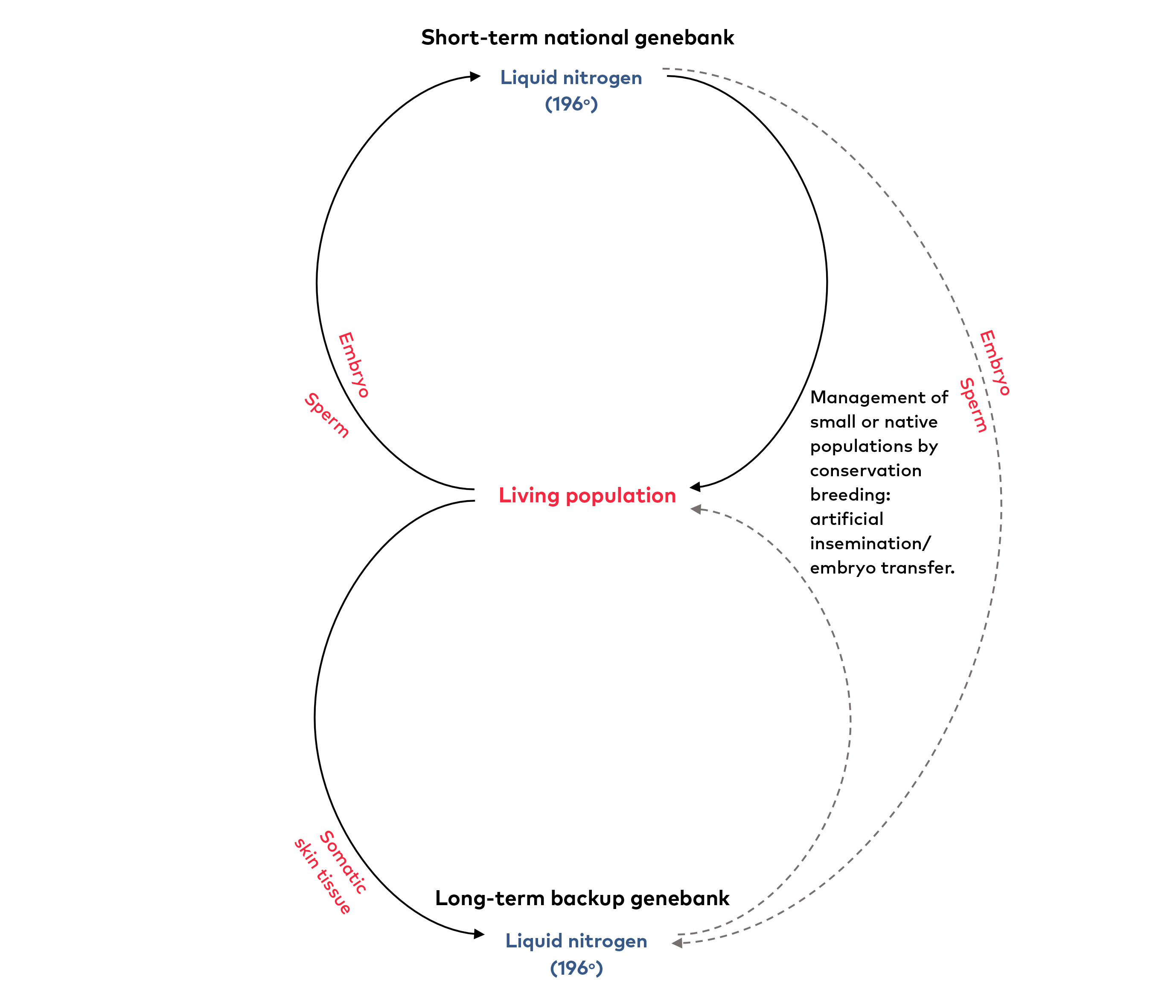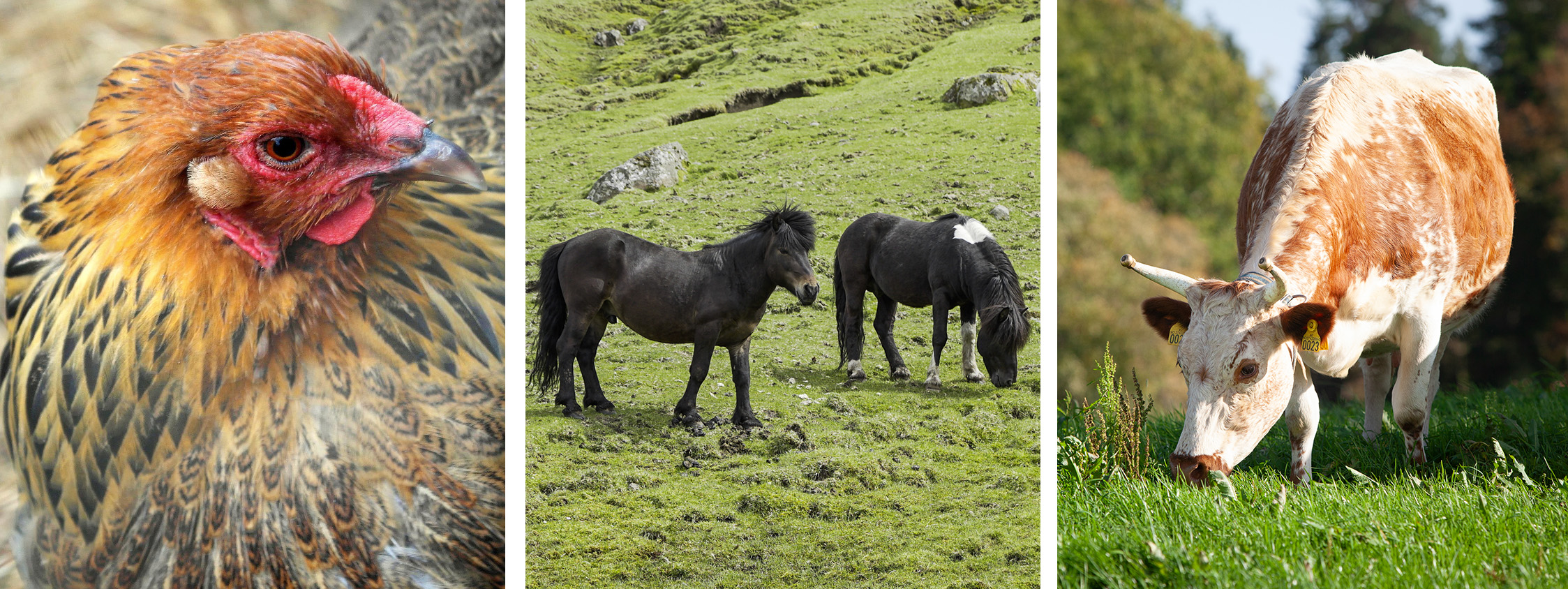3. The major outcomes of the NordFrost activities
The Nordic model for conservation of AnGR
The discussions from the webinars, workshops and through studying other gene bank infrastructures led to the design of a Nordic model for conservation of AnGR (Figure 6). This model includes both in-situ and ex-situ measures for conservation as recommended by FAO. The model focuses on collaboration between short-term national gene banks, breeders and a larger long-term regional emergency back-up gene bank. The national coordinators are responsible for the coordination of conservation work on AnGR in their country, but the NordFrost network suggests that the responsibility for maintaining the long-term gene bank would be shared through collaboration.
Top photo: Detail of cryotank photographed during a NordFrost workshop in Norway.

Figure 6: The Nordic model for conservation.
Modification of gene banking regulations in Finland
The NordFrost network proposed implementation of new updated cryopreservation techniques for gene banking. The meeting led to concrete legislative amendments in Finland related to the collection and use of epididymal sperm, thus facilitating safe and more efficient gene banking practices.
Consensus paper surrounding the status and possibilities for conservation of Nordic breeds
The preparation of a consensus paper was a direct result from the webinars and the following physical workshops at NMBU. The paper presents and discusses the current status of the Nordic breeds in conservation in terms of both in-situ and ex-situ conservation.
